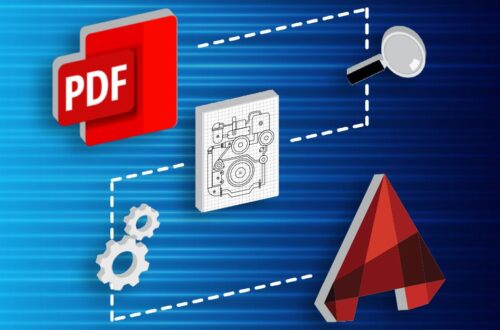
Overview of CAD file formats
Welcome to the world of CAD file formats, the backbone of modern design and engineering. In this comprehensive guide, we’ll navigate through the intricate details, shedding light on their importance, evolution, and the benefits they bring to the table.
Definition of CAD File Formats
CAD file formats, short for Computer-Aided Design file formats, are standardized methods of encoding design information for computer-aided design and manufacturing (CAD/CAM) processes. These formats ensure interoperability and accuracy in transferring design data between different software applications.
Common CAD File Formats
In our exploration, we encounter a myriad of CAD file formats such as DWG, DXF, STL, STEP, and IGES. Each format serves a unique purpose, from 2D drafting to 3D printing, providing versatility in design and manufacturing processes.
Key Characteristics of CAD File Formats
The key characteristics of CAD file formats play a pivotal role in shaping the landscape of modern design and engineering. These formats are distinguished by their precision, scalability, and versatile ability to store both geometric data and essential metadata. Precision is a cornerstone, ensuring that the digital representation of designs accurately reflects the intended physical outcome. Scalability allows CAD file formats to handle projects of varying complexities, adapting seamlessly to the intricacies of both 2D drafting and sophisticated 3D modeling. The capability to store not only geometric details but also metadata, such as material properties and design parameters, enhances the richness of information associated with the digital model. This comprehensive data storage facilitates collaborative efforts and ensures that the design intent is communicated effectively across different stages of the project. The key characteristics collectively contribute to the efficiency and effectiveness of CAD file formats, making them indispensable tools for designers and engineers navigating the intricacies of contemporary design processes.
Benefits of Using CAD File Formats
The utilization of CAD file formats brings forth a multitude of advantages, contributing significantly to the efficiency and precision of various processes. These benefits extend across different aspects of the design lifecycle, fostering innovation and collaboration.
- Enhanced Collaboration: CAD file formats provide a standardized and interoperable platform for design data, fostering seamless collaboration among teams. This interoperability ensures that designers and engineers can work cohesively across different software applications, facilitating a smooth exchange of ideas and reducing the risk of miscommunication.
- Improved Visualization: The visual representation of designs is a cornerstone of the design process. CAD file formats enable high-fidelity 2D and 3D visualizations, allowing stakeholders to gain a comprehensive understanding of the proposed designs. This not only aids in effective communication but also helps in identifying potential issues early in the design phase.
- Precision and Accuracy: One of the key strengths of CAD file formats lies in their ability to maintain precision and accuracy in design data. The digital models created using these formats ensure that the final output aligns closely with the intended design, minimizing errors and enhancing the overall quality of the end product.
- Efficient Iteration: CAD file formats facilitate iterative design processes by allowing designers to make quick and accurate modifications. This agility in making changes ensures that design iterations can be carried out efficiently, leading to the development of optimal solutions and reducing the time required to bring a product to market.
- Ease of Documentation: CAD file formats streamline the documentation process by incorporating metadata along with geometric data. This inclusion of essential information, such as material specifications and design parameters, simplifies the documentation process and ensures that comprehensive records are maintained throughout the design lifecycle.
- Versatility in Design: From 2D drafting to intricate 3D modeling, CAD file formats offer versatility in design. Designers can choose from a range of formats based on the specific requirements of their projects, ensuring that the tools are adaptable to diverse design scenarios and industries.
| Benefits | Description | Impact |
| Enhanced Collaboration | Standardized platform for design data promotes seamless teamwork, reducing miscommunication and enhancing overall project collaboration. | Improved efficiency and accuracy in collaborative projects. |
| Improved Visualization | High-fidelity 2D and 3D visualizations provide a clear understanding of designs, aiding effective communication and early issue identification. | Enhanced decision-making and design refinement. |
| Precision and Accuracy | Maintains precision in design data, ensuring that the final output aligns closely with the intended design, minimizing errors in the manufacturing process. | High-quality end products with minimal defects. |
| Efficient Iteration | Facilitates quick and accurate design modifications, enabling efficient iterative processes and reducing the time required for product development. | Accelerated product development cycles. |
| Ease of Documentation | Incorporates metadata for material specifications and design parameters, simplifying the documentation process and maintaining comprehensive project records. | Streamlined and well-documented design processes. |
| Versatility in Design | Offers a range of formats catering to different design needs, providing flexibility and adaptability across various design scenarios and industries. | Versatile application across diverse design projects. |
Popular CAD Software Compatibility
CAD file formats seamlessly integrate with popular design software like AutoCAD, SolidWorks, and Fusion 360. This compatibility ensures a smooth workflow, allowing professionals to work across different platforms without compatibility issues.
Challenges in Handling CAD File Formats
While the benefits are undeniable, challenges such as file size, interoperability issues, and version compatibility persist. Navigating these challenges requires a strategic approach to ensure efficient handling of CAD files.
FAQs
- What are the most common CAD file formats? Explore widely used CAD file formats such as DWG, DXF, STL, STEP, and IGES, each catering to specific design and manufacturing needs.
- How do CAD file formats enhance collaboration? CAD file formats improve collaboration by providing a standardized way to share design data, ensuring consistency and accuracy across different software applications.
- What challenges are associated with handling CAD file formats? Challenges include file size issues, interoperability problems, and version compatibility issues, requiring strategic approaches for efficient file management.
- Can CAD file formats be optimized for better performance? Yes, optimization techniques such as reducing file size and enhancing performance without compromising design quality contribute to efficient workflows.
- What is the future outlook for CAD file formats? The future holds trends like cloud-based collaboration, enhanced security measures, and integration of AI in CAD design, shaping the landscape of CAD file formats.
- How do standardized CAD file formats contribute to efficiency? Standardization brings uniformity, reducing errors and enhancing efficiency in design processes by facilitating seamless collaboration.




